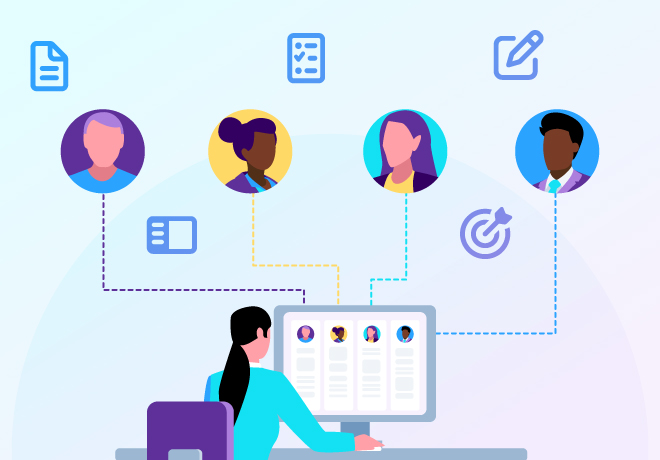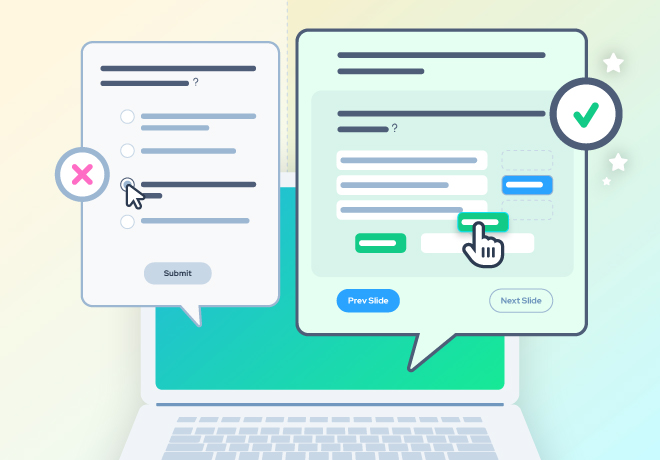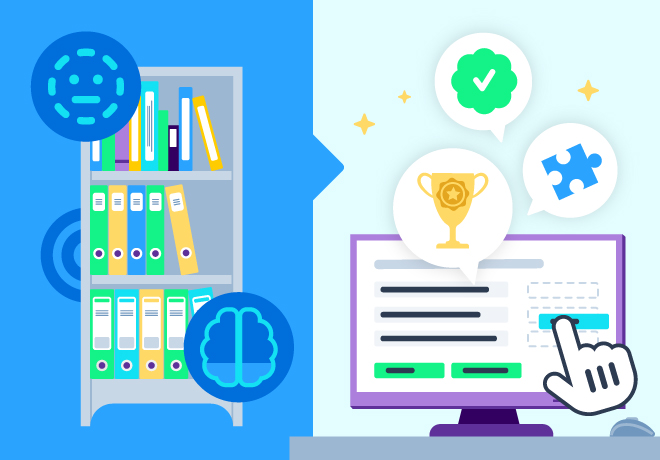
What is SCORM compliance?

Related articles
Get valuable eLearning insights to your inbox.
Listen to Neovation’s Demystifying eLearning podcast generated with NotebookLM!
Listen to our podcast on your favorite platform!
SCORM is a term that crops up often in discussions of eLearning. What is it?
SCORM, which stands for Shareable Content Object Reference Model, is a standard for creating eLearning that works with other eLearning and with LMSs (learning management systems). It has become the industry default or standard for interoperability.
What that means in simple terms is if your learning management system (LMS) is SCORM compliant, you can use eLearning content from any vendor or created in any authoring tool that is also SCORM compliant. Without the standard, you’d be locked into a single proprietary way of coding content.
SCORM is an old standard, though, and it applies primarily to eLearning launched from within an LMS. This can affect the user experience for mobile learning, as it requires an internet connection to the LMS while the learner uses the training. It also means that stand-alone microlearning apps and other newer types of digital learning may not be able to communicate learning data to an LMS, if the LMS only supports SCORM.
What SCORM does — and does not — do

So SCORM is a standard for “shareable content objects (SCOs).” In plain English, an SCO is a unit of training content — a chapter or a page — anything that the LMS treats as a discrete item that can be searched for, enrolled in or consumed.
The idea is to be able to list them, find them, run them and otherwise make these content items — eLearning units — easily available to learners. For organizations that use the LMS for all of their formal training, SCORM makes it easy to create or purchase content that will plug in and work.
SCORM is a technical standard that affects the coding of content so that it works with an LMS or other content. It has nothing to do with the design or substance of the actual content. An analogy is an app that works on your iPhone or Android phone. To work, the coding must follow a specific standard. But within that standard, it’s possible to create, find and use apps that look very different and do very different things.
SCORM also makes it possible to collect some — limited — data about learners. Specifically, in a SCORM LMS, you may track which modules a learner has viewed, how much time they spent within it, whether they completed it and what their quiz scores were. And very little else.
A short history of eLearning standards
The term “SCORM” is used broadly to refer to content that supports one of the iterations of this standard, though several versions exist.
Even before SCORM, an eLearning standard existed: AICC. AICC, the Aviation Industry Computer-Based Training Committee, created the first standard for LMS-based eLearning in 1993. Initially developed for CD-ROM-based content, the standard was adapted in 1998 to support web-based eLearning. It allowed secure transfer and communication between an LMS and content stored on a CD or a separate server.
SCORM 1.0, a draft of the standard, emerged in January 2000. The first version that actually could be used by eLearning vendors, SCORM 1.1, was released a year later. SCORM 1.2, an update that benefited from the trials and tribulations of early SCORM 1.1 users, came out in October 2001. It’s still a widely used industry standard.
Several iterations of SCORM 2004 then emerged. Of these, the 3rd Edition is the most widely used. The key change in this edition was a requirement that the LMS provide and support specific user interface functions, which improve sequencing and navigation — and therefore improve the user experience.
Differences between SCORM Versions
AICC, SCORM 1.2 and SCORM 2004 all standardize computer-based learning to some extent and track course completions, amount of time the learner spends, and quiz scores. Their key differences are summarized below.
AICC
AICC isn’t actually SCORM, but is very similar. Typically, an LMS that supports SCORM 1.2 will also support AICC. As an HTTP-based standard, AICC allows the use of content from a server or domain different from the domain serving the LMS, which means it’s a popular option for course libraries.
This approach allows you to license content on an enormous range of topics. The “content” itself always lives on the vendor’s servers, and you receive small “stub” files to load into your LMS, allowing your learners to access the content.
SCORM 1.2
SCORM 1.2 is still very widely used. Its key benefit was and remains enabling the use of eLearning content across a broad variety of platforms and LMSs. It includes the most basic functionality, including sending back course duration, quiz score and completion status to the LMS.
SCORM 2004, 3rd Edition
SCORM 2004 added sequencing and navigation protocols, allowing content creators to create rules about how learners navigate between content items. This can be as simple as requiring learners to complete the course before taking the quiz, or as nuanced as sending learners back to specific points in the content if they miss a question.
In addition, SCORM 2004 supports sending back more detailed information related to quizzes, including the quiz question itself and the answer option selected, in addition to the learner’s score.
Finally, SCORM 2004 eliminates an ambiguity that has existed in SCORM 1.2 for completion status. In SCORM 2004, a separate completion status (complete/incomplete) is sent along with a success status (passed/failed).
Like SCORM 1.2, SCORM 2004 3rd Edition is widely supported.
SCORM and mobile learning

SCORM courses can work on mobile devices. There are some caveats, though:
- Both the LMS that launches the course and the eLearning content must be SCORM compliant and mobile friendly.
- For a SCORM course to load and launch on a mobile device, and for it to report progress and quiz data, an active internet connection between the mobile device and the LMS is required. If the connection is dropped, some data could be lost and the learner could experience glitches.
- Smaller units of content work better on mobile devices, so consider breaking long eLearning courses into smaller microlearning units to improve the learner experience on mobile devices.
- Similarly, scaling down content designed for use on a full-size screen provides poor learner experience. Choose an LMS and authoring tools that support responsive design, and design course content with a small screen in mind.
Why SCORM compliance matters
Standardization makes life easier. Ensuring that both your LMS and your content are SCORM-compliant ensures a smoother path for content creation, deployment and usage.
SCORM standardizes how the LMS reads and presents content to learners as well as how the LMS presents content, quizzes, learner scores and much more.
- For content creators, SCORM compliance makes it easy for all kinds of organizations, all over the world, to use their content. It won’t matter which SCORM-compliant LMS a customer uses; you can be confident that your content will work.
- For LMS admins, deploying SCORM-compliant content into a SCORM-compliant LMS is simple and doesn’t require complex coding and customization. Admins can anticipate how the content will work and easily install it and deploy it to their learner population.
Moving beyond SCORM

Collecting data on learning that takes place outside of the LMS is increasingly important, since digital learning occurs lots of places. This highlights a limitation of SCORM-based eLearning ecosystems since SCORM modules require a LMS to launch them.
A new standard that is becoming increasingly popular is xAPI, formerly referred to as TinCan. This emerging standard provides greater data security. It also allows for more robust data collection and for collecting data from a much broader variety of learning formats. Organizations choosing to adopt xAPI could implement a robust ecosystem that supports SCORM as well as xAPI.
An xAPI system requires the addition of a Learning Record Store to track non-SCORM learning, including any learning activity that occurs outside the LMS, on social media platforms, websites and curated content pages, mobile apps, etc. Be careful though; not every authoring tool can generate xAPI compatible files, and not every LMS can launch xAPI-based courses.
Alternatively, remaining within the SCORM universe is a viable option for many organizations. As these organizations add eLearning options beyond “conventional” LMS courses, they need to know what to ask vendors and developers. Knowing whether a product is SCORM compliant — and which SCORM versions it supports — is often a deciding factor when choosing between eLearning products.

An experienced writer, editor, tech writer, and blogger, Pam helps you make sense of learning science and eLearning technology. She provides information you can use to drive improvements in your training effectiveness and ROI.
Become part of our L&D community
We publish a new learning hub article — full of useful, practical topics — weekly.
Not sure where where you want to start? Jump into one of our recently published articles and see where it takes you!








-svg.svg)
-svg.svg)
-svg.svg)
-svg.svg)